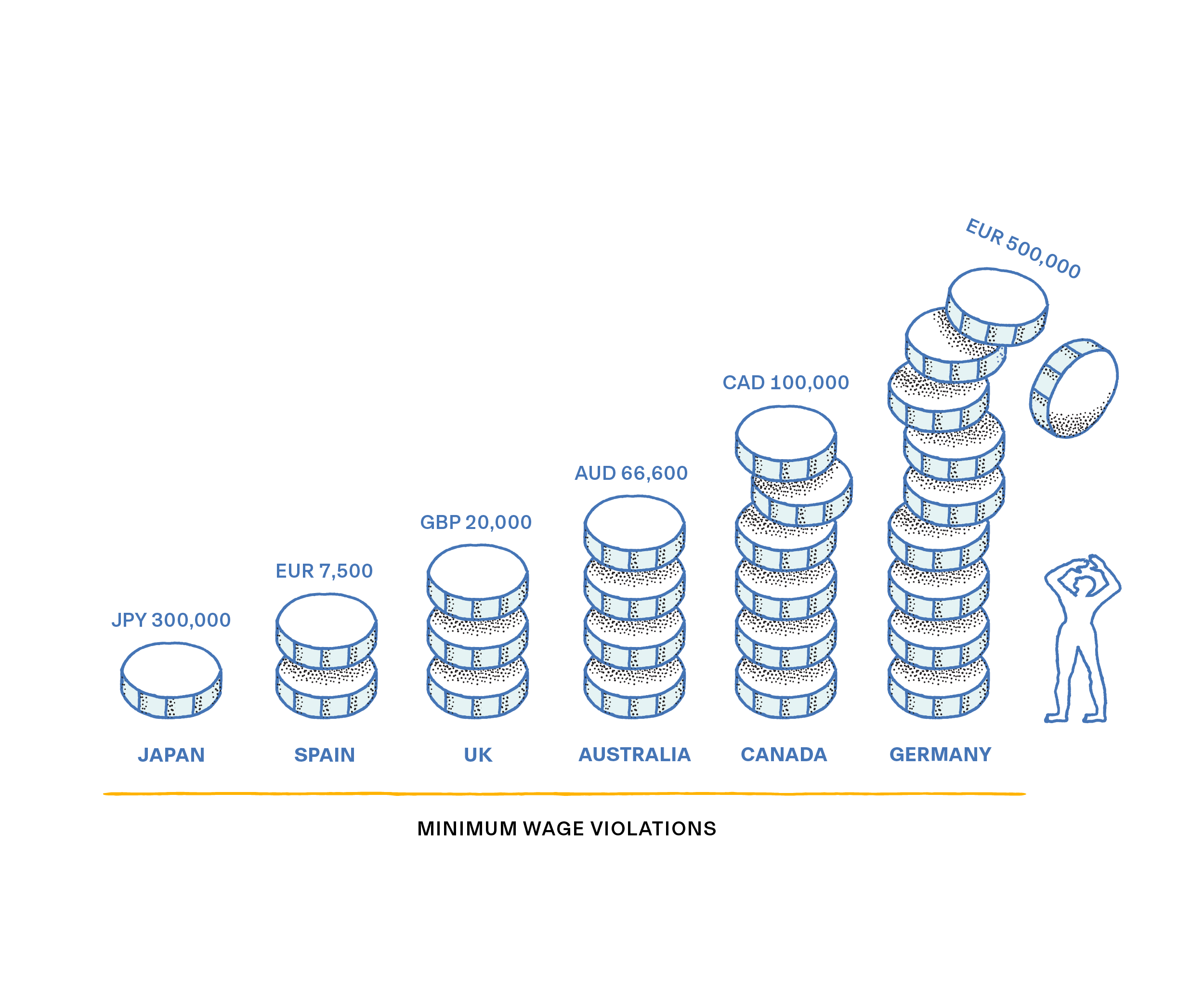The #1 global payroll mistake your company is making

You’re running payroll for your global team. Are you:
- Suffering from unexpected payroll errors?
- Tired from having to manage your payroll and HR in multiple systems?
- Stressed out from having to submit payroll 30 days in advance of your next pay run?
It’s not just you: paying international employees and contractors is painful. What you might not realize is why.
“Global payroll” and employer of record (EOR) companies aren’t what they seem. You, along with most companies around the world, are actually running payroll through a payroll aggregator.
The hours of prep, the endless manual calculations, and the stress of unexpected errors—these are all payroll aggregator symptoms.
If only there was a way to pay your employees and contractors overseas just as easily as you do at home…
What are payroll aggregators?
Payroll aggregators claim to offer global payroll—but in reality, they secretly outsource most of their product and technology to third-party vendors.
Under the hood, they don’t offer a native global payroll system. They take your employee data and send it to third-party firms in each country to process your payroll. In many cases, these vendors are manually entering your data, or making manual changes. After each pay run, they manually download reports and ship that data back to you.
Almost the entire global payroll and EOR market is made up of payroll aggregators. They pretend to be miracle cures that enable you to pay overseas employees and contractors—but in reality, they’re the cause of your global payroll aches and pains.
Think you might be suffering from payroll aggregators? Use our symptom checker to find out.
4 symptoms of using a payroll aggregator…and the “silent killer” you won’t notice until it’s too late.

1. You can't run payroll the way you want to.
Payroll aggregators rely on third parties. They send your employee payroll data out to multiple third-party vendors, who process your payroll.
This drags the process down to the lowest level of functionality their partners offer. We call this the “lowest common denominator” problem.
Let’s say your payroll aggregator partners with dozens of vendors to process your global payroll. If just one of those vendors requires a 15+ day lead time to process payroll, then there's no way, or not enough time, for them to accurately calculate and pay hourly workers for that pay cycle.
Because their capabilities are limited by their vendors, they won't build time and attendance systems: they’d risk further process fragmentation by supporting features in some areas but not others. All they can do is wait and hope for each of their vendors to introduce new features. In the meantime, you have to manually calculate hourly workers’ pay.
This is why you can’t run global payroll the way you want to—and constantly trip up over mystifying constraints:
ⓧ You can’t pay hourly employees because payroll aggregators don't have their own integrated time and attendance system.
ⓧ You can’t prorate pay. When a new employee joins mid-month, you have to manually calculate their partial paycheck amount.
ⓧ It’s painfully slow to issue bonuses, commissions, or reimbursements, because their third-party partners don’t have the flexibility to run off-cycle pay runs. They add incentive payments and reimbursements to the next pay run—which takes 30 days or more.
ⓧ You can’t instantly view your gross and net pay after you run payroll—you have to wait days, because they need to transmit your payroll file to their third parties for processing and then upload it back for you to review.
ⓧ There's no way to automate critical payroll tasks. Payroll aggregators have basic software, and rely on third-party partners to perform critical tasks. That often means they haven't built technology to support important workflows, like notifying employees of important changes, or triggering reminders to pay a bonus.
ⓧ Once you’ve submitted, you can’t make any changes—because they can't make changes after they submitted your payroll to third parties. You’d better not make a mistake! And forget about changing your initial pay schedule, running multiple pay schedules within a country, or moving employees between pay schedules.

2. You can't manage or report on all your employees in a single system.
Payroll aggregators pretend to be a one-stop shop, but they don’t have a native payroll system, global HRIS, or the tools you need to manage a global workforce—like time and attendance tracking software.
As a result, you have to manage different people in different systems, depending on the country they live in, and the tools you need to manage them. Their workforce data is dispersed across all of them, and each of these systems collects different employee data.
Having to buy and maintain multiple systems is painful. What's even more painful is that you can’t check your business’s vital signs—like headcount, retention, or turnover rate—because your data is incomplete, and scattered across different, disconnected systems.
Instead, your only option is painstakingly stitching it together yourself: pulling reports from multiple systems, manually converting currencies, and spending way too much time in Excel.

3. You’re forced to submit payroll 7 to 30 days in advance of your next pay run.
Because payroll aggregators send your employee payroll data out to multiple third parties, they need your payroll data up to 30 days in advance. Shuttling your data back and forth takes time, and this puts your day-to-day operations under strain:
- You want to issue bonuses, commissions, or reimbursements in between payroll submissions, but instead, you have to wait until the next pay cycle. If you submit a reimbursement even a single day after submitting payroll, your employee won’t get reimbursed until the next cycle…which could be up to 60 days later.
- When an employee leaves in the middle of a pay period, you’re stuck overpaying them—because once you’ve submitted payroll for that period, you can’t make any changes. Then you have to deal with the aftermath of getting the funds back (good luck with that).

4. You’re plagued by errors, delays, and issues.
When you use a payroll aggregator, without realizing it you’re putting your trust in hordes of operations staff who manually submit your pay runs in different systems. And when humans are shuttling data back and forth between systems, it’s never going to be 100% accurate.
By stitching together third-party payroll vendors in other countries and manually transmitting your payroll files to them, payroll aggregators make you vulnerable to nasty breakouts of errors, delays, and other unexpected issues.
- Late payments. Manual data processing takes time and risks late payments, and that risk compounds as you scale your business. Whenever you expand to a new country, your payroll aggregator adds another third party into the mix, increasing the complexity and the likelihood of late payments.
- Over or under paying. When payroll aggregators transfer data back and forth manually between systems, one typo is all it takes to introduce an incorrect figure. Cue unhappy, underpaid employees, or trying to claw back the sum you’ve overpaid.
- Incorrect deductions. When benefits and retirement deductions aren’t directly integrated with the payroll system, there’s a high risk of critical information getting lost. This means they’ll deduct the wrong amount—forcing you to spend time chasing up errors and ensuring they’re fixed in the next pay run.
Finally, there’s the “silent killer”: hidden compliance risks that could hit you with a huge fine.
Payroll aggregators issue pay and generate employment contracts. That’s it.
They aren’t a global HRIS, so they aren’t capable of automating compliance beyond payroll and hiring.
- They don’t have time and attendance systems—so you're forced to use workarounds to support hourly workers. That means they can't help you prevent overtime violations.
- They don’t have learning management software—so you can’t use them to assign mandatory compliance training.
- They don’t build global compliance rules into their product—so if you accidentally give a contractor an hourly rate below the legal minimum, they’ll go right ahead and pay it out.
This puts you at risk of overtime violations, minimum wage violations, training violations, and more—and the fines can be huge.

How to cure your global payroll aches and pains
Using a native global payroll system and globalized HRIS eradicates all payroll aggregator symptoms. You and your business will be feeling better in no time.
Rippling is the first true "native" global payroll system. It’s a global HRIS that natively supports every facet of HR:
- You can finally manage all of your people, systems, and data around the world in a single system. It works like the very best payroll systems you’ve used in the US, but seamlessly includes employees in other countries as well.
- You can pay employees who work in different countries and tax jurisdictions in a single pay run. Just click “Submit” once—and Rippling calculates net pay and taxes in milliseconds, in our own tax engine. You never have to wait days to see this calculation, and every employee is paid in their local currency.
- You can run global payroll as easily as for employees in your own country, including hourly employees, off-cycle pay runs and, if you make a mistake, correcting historical pay runs. Plus, whenever you make a change in Rippling, like a raise, it immediately takes effect within payroll, scheduling or prorating as necessary.
- Rippling supports every stage of a company’s growth, so you won’t have to switch systems as you scale. In addition to our global payroll service, we also offer our own native employer of record (EOR) service, which allows you to hire employees globally without setting up your own local entities in a particular country. It’s built on top of our native payroll rails, which means that when the time comes, you can move employees from our EOR to your own local entity and continue using our Global Payroll services. With other EORs you’d need to rip out and replace systems to accomplish this.
- undefined

Payroll aggregators vs. Rippling
Payroll Aggregators
Rippling
15-30 days to process global payroll
<5 days to process global payroll
Impossible to see a breakdown of global payroll in real time
Global payroll processed from start to finish—with the exact amounts for taxes and net pay as you run payroll
No native time and attendance software, nor can you classify global employees as hourly in your system
You can hire salaried or hourly employees as long as the country allows it. Global hourly employees can use Rippling Time & Attendance, which syncs with Rippling Global Payroll—so you never have to do manual calculations.
Unable to process off-cycle pay runs like bonuses or reimbursements
You can run off-cycle pay runs as needed, because we don’t rely on third-party payroll partners
Prorated pay runs need to be calculated manually when new hires join mid-cycle
Proration is automatically calculated, and you can see the breakdown instantly
Currency conversions must be calculated manually during pay runs to see total payroll costs in your HQ's local currency
Rippling automatically does the calculation for you in Global Payroll, and shows you the converted amount at the time of the pay run
Do the bare minimum to protect you from compliance risks
Global compliance default rules will be built into every product. Rippling can help prevent you from falling foul of minimum wage, sick leave, and overtime rules.
Disclaimer: Rippling and its affiliates do not provide tax, accounting, or legal advice. This material has been prepared for informational purposes only, and is not intended to provide or be relied on for tax, accounting, or legal advice. You should consult your own tax, accounting, and legal advisors before engaging in any related activities or transactions.





